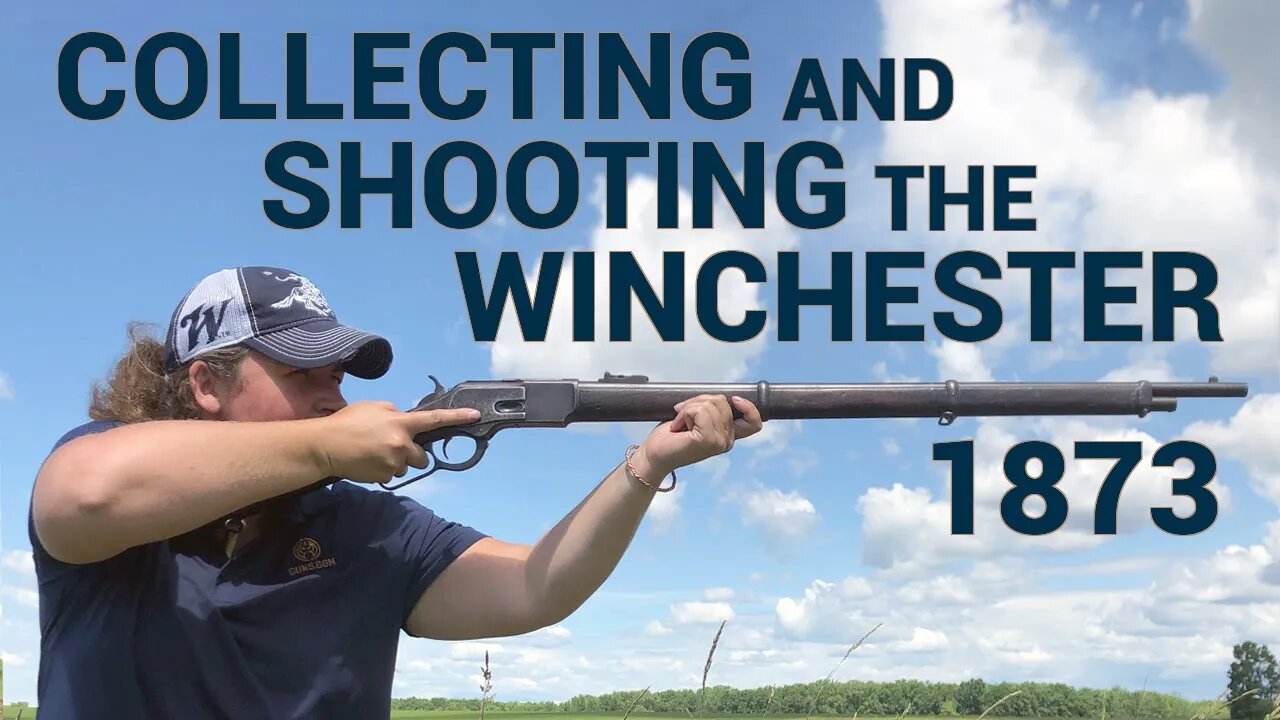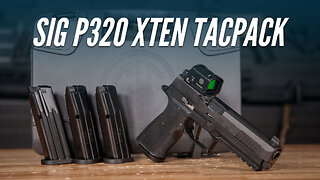Premium Only Content

Collecting and Shooting the Winchester 1873
Few guns define a nation like the Winchester 1873. A fine piece of American-made steel and walnut granted repeatable firepower to the hearty souls venturing westward – not to mention hunters, outlaws, and lawmen across the nation. The Model of 1873 remains an iconic rifle today and one that belongs on every shooter’s must-own list. Here’s why.
Over 720,000 Winchester Model 1873s were produced from the years 1873 through 1919. Oliver Winchester’s patents and works owe heavily to earlier repeating rifle designs from Benjamin Tyler Henry of Henry rifle fame and the Volcanic Repeating Arms Company with its ties to Horace Smith and Daniel Wesson. At its core, the Winchester Model 1873 is a lever-action, toggle-link design that fires metallic centerfire cartridges.
Factory production rifles came most commonly with a full magazine tube, blued finish, sliding dustcover, brass cartridge lifter, crescent-shaped buttplate, and straight-grain walnut stocks. Interestingly, the first Model 1873s used an iron receiver until 1884, when the transition to steel receivers took effect.
The Model 1873 was originally chambered in the most common centerfire metallic round of the day—the .44 Winchester Center Fire, or as it is more commonly known today, the .44-40 Win. That was followed in 1879 by a .38 WCF, or .38-40 Win, chambering. Then the .32 WCF, or .32-20 Win, came in 1882, as cowpokes, gunslingers, and hunters often opted to carry both a long gun and revolver in the same chambering. Fewer shooters and collectors know that Winchester also offered the 1873 in the first rimfire repeater of its time, as the Winchester 1873 was chambered for both .22 Short and .22 Long rimfires, which made a short run beginning in 1884.
-
 3:57
3:57
Guns.com
16 days ago $0.34 earnedSIG P320 XTen Tacpack
8761 -
 2:02:20
2:02:20
Matt Kohrs
11 hours agoTime To Buy The Stock Market Dip?! || The MK Show
40.6K2 -
 LIVE
LIVE
The Big Mig™
5 hours agoLet’s Talk Music w/ Artist Jimmy Levy
2,500 watching -
 36:20
36:20
BonginoReport
5 hours agoJoe Rogan Brings Back Pizzagate (Ep.154) - 03/06/2025
94.8K106 -

Wendy Bell Radio
7 hours agoStranded & Abandoned By The Democrat Party
58.9K36 -
 7:41
7:41
Adam Does Movies
17 hours ago $11.27 earnedDaredevil: Born Again Review - Does Disney Do The Show Justice?
73.3K6 -
 5:06
5:06
Tundra Tactical
18 hours ago $4.77 earnedPam Bondi MUST Stop ATF's Zero Tolerance Policy NOW!
46.3K9 -
 18:38
18:38
The Lou Holtz Show
22 hours agoLou Holtz: "Trump Stands for America—And He Means It!" | Ukraine, Pete Rose & Common Sense 🇺🇸
62.3K10 -
 3:54
3:54
Randi Hipper
22 hours ago$100,000 BITCOIN COMING! HERE'S WHY
42.2K4 -
 9:34
9:34
ariellescarcella
15 hours ago"Born This Way Is A Lie" : Religious Debate
77.2K14